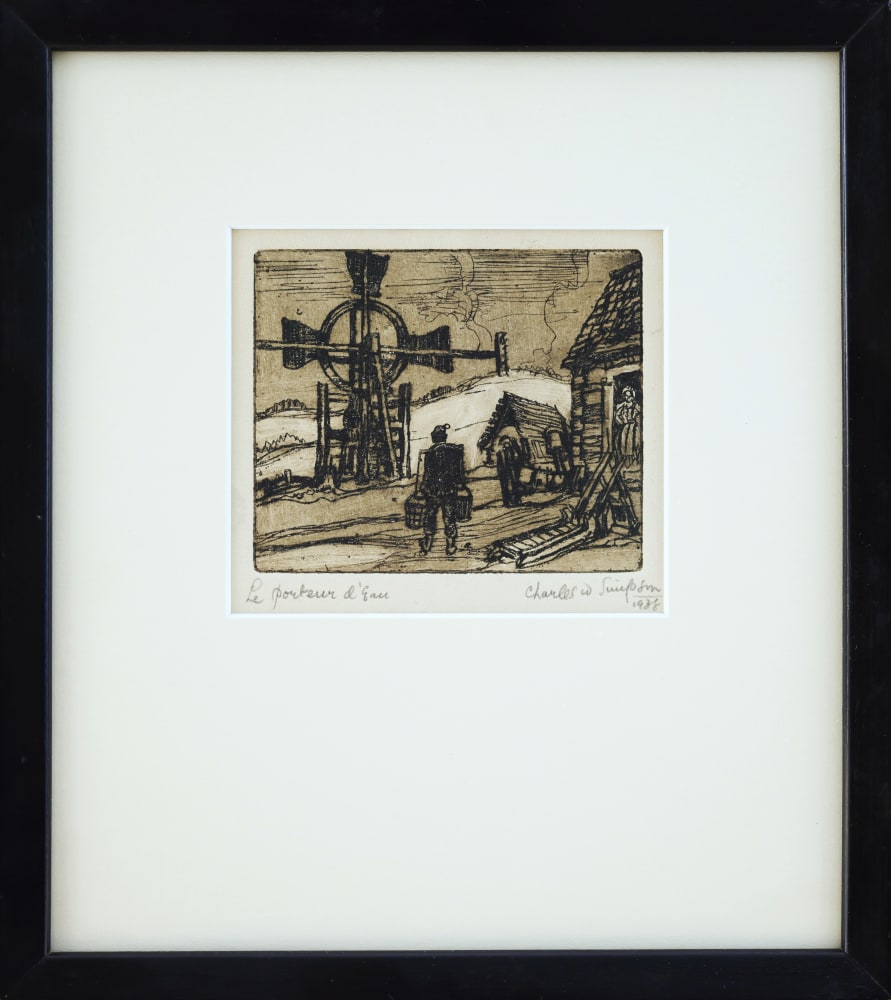Charles Walter Simpson Canadian, 1878 -1942
protected by museum glass
Further images
This artwork is a finely detailed etching titled Le Porteur D’eau (The Water Carrier), created by Charles W. Simpson in 1938. It presents a rustic rural scene rendered in a warm sepia tone, typical of early-20th-century European-influenced printmaking.
At the centre, a solitary figure carries two heavy water buckets suspended from a yoke across his shoulders, walking along a dirt path toward a wooden farmhouse. To his left stands a large wooden windmill, whose robust blades dominate the skyline and symbolise the practical machinery of rural life. The rolling hills in the background are subtly outlined, suggesting a cold or late-autumn landscape with bare trees and smoky air. On the right, a woman stands in the doorway of a timber structure—possibly a farmhouse—gazing outward, perhaps waiting for the water carrier’s arrival. The etched lines are strong and rhythmic, giving texture to both the earth and sky while retaining a quiet simplicity.
The composition embodies the interwar period’s fascination with agrarian life and human labour, themes often explored by Simpson and his contemporaries. The tonal shading, likely achieved through aquatint or plate wiping, softens the scene and evokes the dignity and routine of rural existence.
Overall, Le porteur d’eau captures a timeless moment of everyday endurance and pastoral calm, distinguished by Simpson’s confident draughtsmanship and empathy for the working figure set against an industrious countryside.
Provenance
- private collection, Niagara- Ferrante Frames, Niagara






